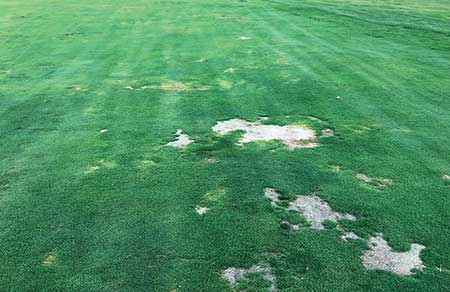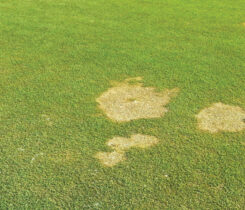Nematodes on the March

Severe damage on a golf course fairway caused by extremely high levels of lance nematodes during August 2019. (Photo: Nathaniel Mitkowski)
In northern climates, the standard sampling time for nematodes is near the end of March or early April. But, this can shift earlier or later, based on weather conditions. We often find that moisture is as important as temperature. If it is a very wet spring, nematodes may not thrive and populations can remain low.
When sampling for nematodes, a single green is not going to tell you much. Nematode populations change over time, and they are not consistent on every green. My recommendation is to pick three of your worst or mediocre-quality greens for testing.
If populations are high at spring sampling, you can treat them and your root mass will respond accordingly. No treatment is required for low population levels.
Check your nematodes again in mid-to-late May. Nematode populations will still be increasing, particularly without treatment, but if populations are below threshold levels, then treatment is still not necessarily required. Do at least one more sampling at the end of June or the beginning of July. If your populations remain low, you are generally covered for the rest of the year. If they are high, treat again. In the worst cases I have seen, it is not unusual to treat for nematodes two to four times throughout the growing season, but the type of nematodes present and the chemical being used will determine the application interval.
If the fall is warm, additional sampling in September or October may be required. Populations treated in June can rebound by October. But, an actively growing root system can do very well even if population numbers are above the threshold.
Finally, the only way to get reliable data is to take composite samples. For each green sampled, you should take 20 to 30 cores and combine them into one bag. Take core samples at approximately 5-foot centers from each other to form a grid. Also, when resampling the green, the cores should be taken from the same approximate area of the green.
I do not recommend preventive treatments unless you have a documented nematode issue. Track your nematodes, and once your nematode numbers are determined, it is appropriate to talk about your best strategy based on nematode numbers, your budget, greens conditions and time of year.












